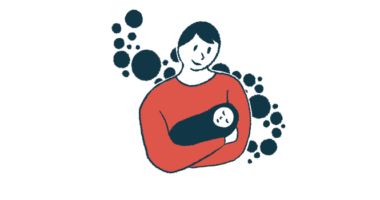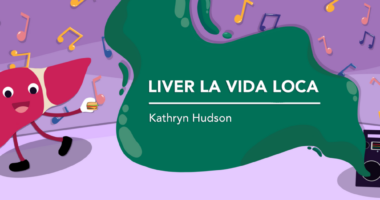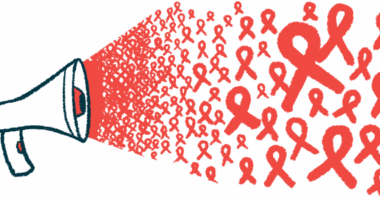How liver health affects your nails
Last updated Sept. 30, 2025, by Susie Strachan

When your liver isn’t functioning properly, many parts of your body are affected, including your nails, causing changes like white discoloration, ridges, or thickening. Conversely, changes in your nails can be a sign that you may have liver disease.
Understanding how liver disease affects your nails may help you to detect the condition early for better outcomes.
Liver disease and nails
The liver is involved in several bodily functions, including filtering toxins, producing digestive fluids and essential proteins, and breaking down hormones.
Poor liver function can therefore result in toxin accumulation, nutritional deficiencies, insufficient protein production, and hormonal imbalances that can interfere with nail health.
Some liver conditions can make nail changes more likely. For example, liver diseases like cirrhosis (irreversible scarring of the liver from long-term damage) and liver cancer are more commonly associated with certain nail symptoms.
Some of the most common liver disease symptoms in nails include:
- discoloration (white, pale, or yellow nails)
- thickened or brittle nails
- vertical or horizontal ridges (Beau’s lines)
- nail separation or detachment.
While these nail changes may point to liver disease, they may also occur in other health conditions, such as chronic kidney disease, which is why it is important to talk with your healthcare provider if you see changes in your nails.
Nail conditions linked to liver disease
Poor liver function can cause changes in your nails that can vary from discoloration to changes in shape. Some changes may be more common in certain liver diseases.
Terry’s nails
People with Terry’s nails have nails that are slightly cloudy and appear mostly white with a thin pink or brown band near the tip. The half-moon-shaped base of the nail (lunula) is usually absent.
About 40% of people with liver disease, and up to 80% of those with cirrhosis, have been reported to have Terry’s nails.
The exact cause of Terry’s nails isn’t fully known, but it may be related to changes in blood flow and tissue under the nail.
Muehrcke’s lines
Muehrcke’s lines have been reported in people with liver disease, particularly cirrhosis.
The lines usually appear on the middle three fingernails and consist of multiple white bands that run across the nails parallel to the lunula. The lines fade when pressure is applied to the nails, and do not move with nail growth.
This nail abnormality is often linked to low albumin levels in the blood, which can happen with liver disease. Albumin is a protein the liver makes that helps maintain fluid balance in the bloodstream, carries nutrients and hormones, and supports wound healing.
Clubbing (hippocratic nails)
Finger clubbing can be linked to several health conditions, including liver cancer and cirrhosis. With clubbing, the nails curve outward and downward over the fingertips, creating a rounded, bulbous shape. The fingertips may also look larger than usual.
Koilonychia (spoon nails)
With koilonychia, or “spoon nails,” the nails are thin and concave, curving inward, like the inside of a spoon. The edges of the nails are raised, which adds to the spoon-like appearance.
Koilonychia can occur naturally in some people, but it is associated with some health issues, including cirrhosis. This nail condition is mostly commonly linked to anemia due to iron deficiency, which can occur also as a result of malabsorption in liver disease.
However, it can also be caused by hemochromatosis, a condition that can lead to liver disease and cirrhosis because of the excessive iron accumulation in the liver.
Other nail issues
Other nail problems linked to poor liver health include:
- Brittle nails, which lead to splitting and peeling, and are often associated with cirrhosis.
- Nail separation (onycholysis), which is also seen in liver conditions like cirrhosis and primary biliary cholangitis. This occurs when the nail detaches from the underlying nail bed, starting at the tip and moving toward the base.
Managing nail health
Taking steps to prevent liver disease can benefit your liver and nails.
Avoiding alcohol, maintaining a healthy weight, and getting vaccinated for some forms of viral hepatitis (liver inflammation) are ways to protect your liver and reduce the risk of related nail abnormalities.
If you’ve already been diagnosed with liver disease, managing the condition is essential for both your overall health and nail health; this may include taking medications to manage conditions like cirrhosis, primary biliary cholangitis, or hepatitis.
In severe cases, a liver transplant may be considered, with some studies showing nail improvements following the procedure.
Consider tracking the changes in your nails — such as discoloration, thickening, or separation — using a nail health chart to determine whether these changes improve or worsen with treatment.
Lifestyle changes
Making healthy lifestyle choices can also support your nail and liver health.
- Eating a healthy diet rich in vitamins, minerals, and protein supports nail growth and may help make up for any nutritional deficiencies caused by liver disease and associated changes in your nutrient metabolism.
- Engaging in regular exercise for liver health can support overall well-being and circulation, which may help maintain nail strength.
- Avoiding alcohol is important if liver disease is alcohol-related, as continued use can worsen both liver disease and nail health.
- Stopping smoking can help with nail health by improving circulation and reducing damage to the body.
- Taking natural supplements may help improve disease prognosis and help the liver recover in people who have hepatitis, fatty liver disease, and other chronic liver conditions.
Protecting your nails
In addition to treatments and lifestyle changes, protecting your nails may prevent damage.
- Avoiding harsh chemicals, such as acetone-based nail polish removers and strong cleaning agents, can help prevent further weakening of your nails.
- Keeping your nails trimmed and moisturized can help reduce brittleness and breaks.
- Wearing gloves while doing household tasks can help protect your nails from trauma and irritants.
By seeking treatment for your liver condition, making lifestyle changes, and protecting your nails from wear and tear, you may be able to prevent or lessen some of the nail changes that occur in liver disease.
Always consult your doctor before adjusting medications, starting supplements, or making lifestyle changes, as some may interact with your treatment or affect liver function.
Liver Disease News is strictly a news and information website about the disease. It does not provide medical advice, diagnosis, or treatment. This content is not intended to be a substitute for professional medical advice, diagnosis, or treatment. Always seek the advice of your physician or other qualified health provider with any questions you may have regarding a medical condition. Never disregard professional medical advice or delay in seeking it because of something you have read on this website.
Recent Posts
- US enrollment starts for hepatitis B gene therapy clinical trial
- Women with PBC may be at high risk of disease flares after childbirth
- Agrimonolide shows benefits in cholestasis mouse model
- The health risks of soda, including liver damage, are increasingly clear
- Dosing begins in trial of drug combo for severe fatty liver disease





